How to Plan for Safe Horse Stalls?
With so many choices of horse stalls and other barn products, it can be difficult deciding where to start. When you start your planning stages, finding the right horse stall system starts with the right barn design. Barn design is one of the best places to start because the style and design greatly dictate the horse stalls that you can use.
Budgeting
It's important to consider how much you need to spend to create a safer home for your horses, and please keep an open mind if your budget doesn't allow for the fanciest stall systems out there. There are many options that are both affordable and attractive. RAMM account managers can help suggest ways to customize your horse stall systems to ensure you get the most for your hard-earned dollars.
Climate and Air Direction
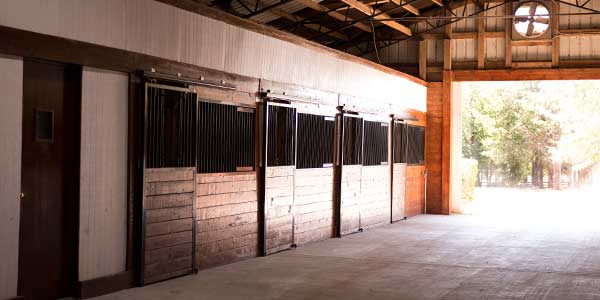
"When you find your site, spend time there on a blustery day to identify the prevailing wind direction; then orient your barn with that in mind. You want good air circulation, of course, but you don't want your center aisle to be a wind-tunnel - so orient it at about a 45-degree angle to the prevailing wind." - Today's Horse Sense
Floor Planning
If your barn is not built yet, we recommend considering your floor plan. To make the flooring safer for your horse, start by pulling back any bedding and assess the floor. Pawing on a concrete or wood floor can wear down a horse's toes or loosen a shoe, whereas, on dirt floors, it can create holes and uneven footing.
Another thing to keep your eye on is weaving. Weaving, which is when a horse transfers weight from one front leg to the other, can produce hazard pits at the entrance to the stall. Using stall mats can help alleviate the stress on your horse's legs, as well as prevent uneven floors.
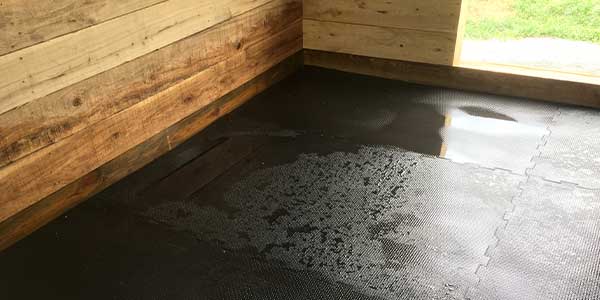
On a dirt floor, even normal day-to-day wear-and-tear can cause ruts – especially if your horse habitually follows the same pattern as it walks the stall. If the horse circles excessively, it's wasting bedding and makes for an extremely messy stall that will take longer to clean. Again, using stall mats makes cleaning stalls easier and they reduce waste because the floor won't be churned up.
Permanent vs. Portable Horse Stalls
Will the horse stalls you purchase remain in your barn permanently or are you interested in temporary stalls? Both permanent and temporary stalls need to be constructed of heavy-duty, quality materials.
Does your barn have support posts? If so, your horse stall options are numerous; all of RAMM's horse stalls except the Dublin portable panel series require support posts for installation. If your barn does not have support posts you can either add them in or go with stalls from the Dublin series, which is freestanding and uses heavy-duty connectors for excellent support and simple installation. Here's a customer review of the Dublin installation:
The Dublin portable panel series works well for temporary applications, but is also durable enough to be used in a permanent setting.
Check out how easy it is to open and close the doors with the one-touch track system:
How Will Your Horse Stalls Be Used?
How often are your horses kept in their stalls? Do you use your barn/facility for boarding, breeding, or foaling? If you board horses or use your barn for any kind of equine business, you'll want to pay extra attention to the durability of products so your horse stalls stay looking great for years to come.
When you add items like post edging and wall capping, the exposed edges will be covered, thus prohibiting chewing and cribbing. Well-maintained, high-quality horse stalls will give your business a professional image.
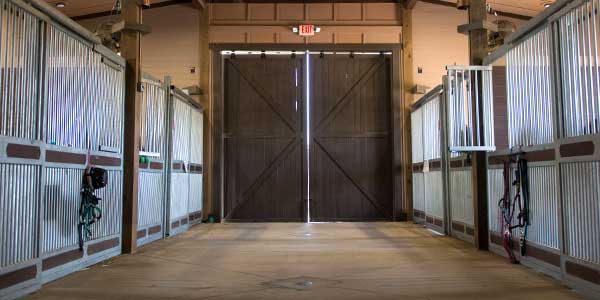
Feed doors, large feed doors, swing-out bucket doors, and other horse stall accessories offer addtional value by improving your efficiency during chores. Having added options to feed and/or water from outside of your horse stalls is very beneficial, even if you already have barn help.
Inspecting Your Horse's Habits
A thorough inspection may uncover some surprises. Horses are large animals and can do considerable damage without even trying. Putting a horse in a stall where he may easily get bored may cause it to develop some bad and potentially harmful habits. As your horse expends its pent-up energy, these bad habits become almost impossible to break. Some of the most common bad habits include chewing, cribbing/wind-sucking, weaving, pawing, stall walking, and kicking. Although not as common, others include rubbing and drinking too much water.
Many people think chewing and cribbing/wind-sucking are the same, but they actually differ. Cribbing is not chewing; when a horse cribs, it puts its teeth on something (like a stall door) and sucks in air with big gulps. Chewing is when the horse actually chews on and sometimes swallows something he shouldn't, such as wood from a stall wall – both of these actions can be damaging to the horse and the stall. Are there teeth marks on the wood?
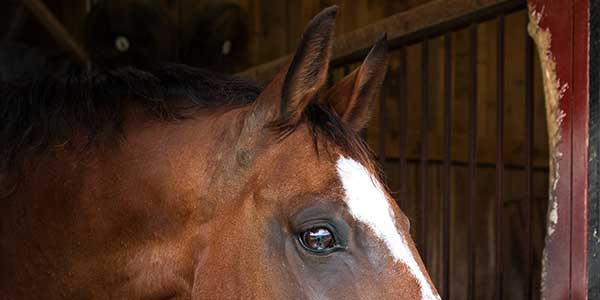
It's a good idea to make a thorough stall inspection to ensure nothing has been overlooked. Develop a routine to periodically inspect your stalls from bottom to top. Even if your horse doesn't chew or crib, everyday wear-and-tear on the stall will call for periodic maintenance and safety checks. When doing your inspection, don't forget to check the condition of your stall mats. If the edges are curling, flaky, soft, or if the mat has developed an odor... it is time to replace them.
Working your way up, visually inspect your stall walls for any telltale signs of kicking. Next, gently feel the walls with your fingers; you may find a splinter, loosening nail, or soft board that your eyes missed. Move over to your feed bin. Is it cracking or rusting? If so, replace it; the cracks will only get bigger and rust can form sharp-edged holes. If you have automatic waterers, make sure they're working properly. If you are using your waterer's heating system, make sure electrical cords are in good repair. Test to ensure all waterers are working properly. Even in barns without electric or running water, insulated buckets can be used to help keep fresh water available to your horse. Horses need approximately the same amount of water in the winter as in the summer. Lack of water can affect the digestive system and cause impaction colic.
Safety Precautions
Allowing a horse to put its head out of the stall can greatly reduce boredom and help prevent it from developing these bad habits. However, make sure that the opening you construct for your horse is a safe one. Cover exposed wood so he can't chew the door and so that wood won't splinter off when he rubs it. Metal fittings made specifically to cover wood discourage chewing and won't splinter. Do not create an opening so big that a horse may be tempted to try to escape. There may be times when it is necessary to keep a horse completely contained in its stall, such as when other horses are being moved through the aisle. Make sure stall openings can be closed off so your horse cannot reach out and bite another.
Also, remember if a horse can reach something, the chances are it will pull it into the stall and step on it. You are responsible for your horse's actions. Make sure there is nothing within reach for it to grab, including things you may not think of, like a light switch or door latch. It's always a good idea to have a halter and lead rope on each stall – just make sure it is out of reach of your horse but easily accessible to you.
Continue your inspection to the top of the walls of the stall. If your horse is tall enough to see over the wall, consider covering the tops of the walls with metal edgings. If possible, make walls tall enough so that neighboring horses can't bite each other, but still allow for proper ventilation. Horses with a lot of pent-up energy may rear up in their stalls and taller walls will help prevent them from getting hung up on the walls.
Of course, the best way to treat and prevent bad habits and to alleviate boredom in general, is by providing the horse with adequate turnout time. If a large area is not available, even some time outside in a round pen will allow your horse to release some energy. If turnout is not always possible, give the horse a toy as a safer distraction. You can make an inexpensive DIY horse toy by tying a couple of milk jugs together with twine and hanging it from the ceiling. There are also many commercial toys on the market designed for the stabled horse.
Letting your horse look out of its stall and see things always helps, but it's always important to remember... safety first. As large as horses are, they are still as fragile as kittens. It is up to us to provide them with a stall that will help protect them from more than just the elements.
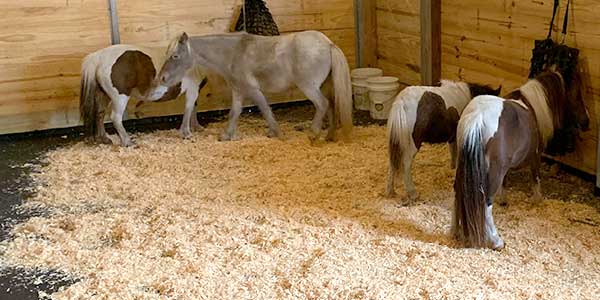
When it's time to plan for a safer horse stall project, RAMM is a great place to start. In addition to all of RAMM's high-quality products, you'll also find a resource center packed with information! As always, our representatives are here to talk about planning your horse stall project, with your budget and horses in-mind.
